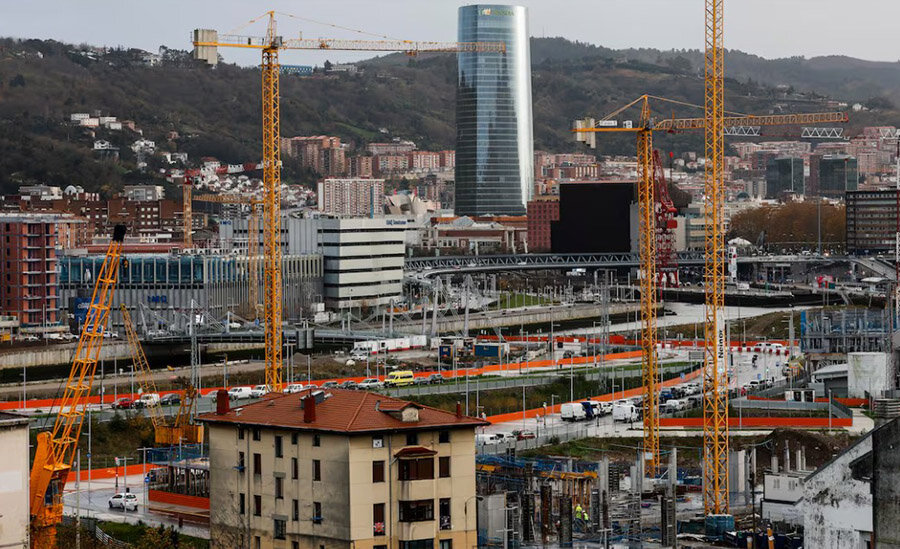читайте также
 Spain’s Real Estate: Record Prices and Falling Yields
Spain’s Real Estate: Record Prices and Falling Yields
 Fuel crisis at Seattle Airport: the Olympic Pipeline outage has disrupted supplies
Fuel crisis at Seattle Airport: the Olympic Pipeline outage has disrupted supplies
 European Hotel Construction Market Breaks Records: Upper Upscale Segment Reaches New Heights
European Hotel Construction Market Breaks Records: Upper Upscale Segment Reaches New Heights
 Middle East Hotel Construction Pipeline Hits Record High: 659 Projects and 163,816 Rooms Under Development
Middle East Hotel Construction Pipeline Hits Record High: 659 Projects and 163,816 Rooms Under Development
 New Rules for Greece’s Golden Visa: What Changes for Investors
New Rules for Greece’s Golden Visa: What Changes for Investors
 Holiday Travel 2025: Less Spending, More Generational Shifts — Deloitte’s New Forecast
Holiday Travel 2025: Less Spending, More Generational Shifts — Deloitte’s New Forecast
Spain Launches €4 Billion Plan to Build 43,000 Homes by 2026

Spanish Prime Minister Pedro Sánchez has unveiled PERTE de la Vivienda, an ambitious government initiative aimed at advancing industrialized housing construction. According to El País, the program will deliver 43,000 homes by 2026 using factory-built modular methods to reduce time, labor, and material costs.
Described as “the greatest public housing effort in decades,” PERTE will be supported by €4 billion in public funding, with an additional €4 billion expected from private investment. The modular construction model allows for homes to be manufactured offsite and assembled quickly, improving cost-efficiency and sustainability. All participating buildings must meet modern energy efficiency and material reuse standards.
The initiative spans the entire housing supply chain — from component manufacturing and logistics to workforce training and digital innovation. The government estimates it will create around 13,000 new jobs and jumpstart Spain’s lagging industrial housing sector. Currently, only 1% of Spanish housing is industrially produced, far behind Northern Europe. PERTE aims to close this gap through subsidies, education programs, and support for startups and tech hubs involved in modular construction.
The plan will be coordinated by an interministerial committee involving the ministries of transport, industry, and environment. Initial pilot projects will launch in Aragón, Valencia, Catalonia, and Madrid — regions suffering from the most acute housing shortages. PERTE is part of a broader national housing strategy, which also includes regulating short-term rentals and repurposing public real estate. However, this program is considered the most systemic and transformative effort to provide next-generation affordable housing.
Spain Faces a Severe Housing Deficit
Spain's housing shortage is critical. According to an April 2024 report by the Bank of Spain, the country is missing around 600,000 housing units needed to balance supply and demand source. This gap is driven by rising household formation, immigration growth, and slow construction rates. While the country gains 275,000 households per year, only 90,000 new homes are being built annually.
Renters are most affected. 40% of tenants spend over 30% of their income on housing, and 76% face significant barriers to homeownership. The Bank of Spain emphasizes the need for long-term, coordinated policy focused on boosting supply — especially rental housing — and expanding affordable housing zones through improved transport links.
Private Sector Reluctance
Despite public support, PERTE faces structural challenges — particularly low private sector participation. In February 2025, one of Spain’s top developers, Aedas Homes, declined to join a SAREB-led public rental housing project. Initially, developers were to build on state-owned land and offer part of the units at subsidized rent. However, Aedas Homes deemed the financial model unprofitable and formally withdrew from the project.
Cinco Días explains that the proposal failed to offer viable returns for private investors, especially given long payback periods and rental management risks.
This case highlights a broader issue: without balanced financing models and risk-sharing mechanisms, private developers are unlikely to participate in social housing efforts — even with public subsidies. With high construction costs, expensive credit, and limited consumer purchasing power, developers are demanding more stable and attractive investment conditions.
What Will It Take for PERTE to Succeed?
For PERTE de la Vivienda to succeed, direct public funding alone is not enough. The government must also establish long-term incentives for private investors, such as tax breaks, rental guarantees, or public-private partnership models. Without these, meeting the program’s ambitious targets will be extremely difficult.





